Turquoise-browed Motmot: Meaning, Facts, and Why It’s Unique
The Turquoise-browed Motmot (Eumomota superciliosa) is a vibrantly colored bird found in Central America. Known for its striking blue tail feathers with “racket tips,” it’s both a symbol of beauty and a fascinating species for bird lovers. This article covers its habitat, diet, rarity, and cultural meaning.
Overview – What Is the Turquoise-browed Motmot?
The Turquoise-browed Motmot is part of the motmot family, a group of near-passerine birds native to the Neotropics. It’s the only member of its genus Eumomota, making it taxonomically distinct.
It has olive-green underparts, a rufous belly, and a turquoise “eyebrow” above a black mask. Its tail is one of the most recognizable in the bird world—long, with central feathers ending in bare shafts tipped by turquoise “rackets.”
Where Does the Turquoise-browed Motmot Live?
This species has a limited range:
Yucatán Peninsula: Eastern Mexico and northern Guatemala
Pacific slope: Southern Mexico to northwest Costa Rica
It thrives in open woodlands, forest edges, and gardens, often near human habitation. Unlike many tropical birds, it is frequently seen perched in open view.
Why Is It Called a Motmot?
The name “motmot” is onomatopoeic—it mimics the two-note “mot-mot” call of some species in the family. The Turquoise-browed Motmot’s call is softer but still distinctive. Early naturalists named the entire group based on this sound.
What Makes It So Colorful?
Its brilliant colors come from structural feather properties rather than pigments alone.
Turquoise & blue: Light refraction in feather microstructures
Cinnamon belly: Pigments called carotenoids from diet
Black mask & tail tips: Melanin for durability and contrast
The unique “racket tail” is shaped partly by preening behavior—the bird plucks the barbs to create the bare shaft section.
What Does the Turquoise-browed Motmot Eat?
Motmots are omnivorous:
Insects: Beetles, butterflies, grasshoppers
Small prey: Lizards, frogs
Fruits & berries: Especially during non-breeding seasons
They hunt by perching quietly, watching for movement, and swooping down to catch prey.
Are Motmots Rare?
The Turquoise-browed Motmot is not globally endangered and is listed as Least Concern by the IUCN.
However, its range is small, and habitat destruction could impact local populations. In many regions, it’s a familiar sight and even the national bird of El Salvador and Nicaragua.
Cultural Significance and Symbolism
In Central American folklore, the Turquoise-browed Motmot is often seen as a symbol of freedom, beauty, and grace.
Its presence near ancient ruins has led to myths connecting it with the Mayan civilization. In Nicaragua and El Salvador, it is a national emblem, appearing on stamps, currency, and tourism materials.
Frequently Asked Questions
Q1: What does the Turquoise-browed Motmot represent?
It often symbolizes freedom, natural beauty, and cultural pride in Central America. In Nicaragua and El Salvador, it’s a national bird.
Q2: What does the Turquoise-browed Motmot eat?
It eats insects, small reptiles, and fruits, adapting its diet to seasonal availability.
Q3: Are motmots rare?
The species is not endangered, but its limited range makes it regionally special.
Q4: Why is it called a motmot?
The name imitates the “mot-mot” call produced by some species in its family.
Q5: Where can I see the Turquoise-browed Motmot?
It’s best spotted in open woodlands and gardens from southern Mexico to northwest Costa Rica.
Related post: Shima-enaga: Hokkaido’s Enchanting Snow Fairy
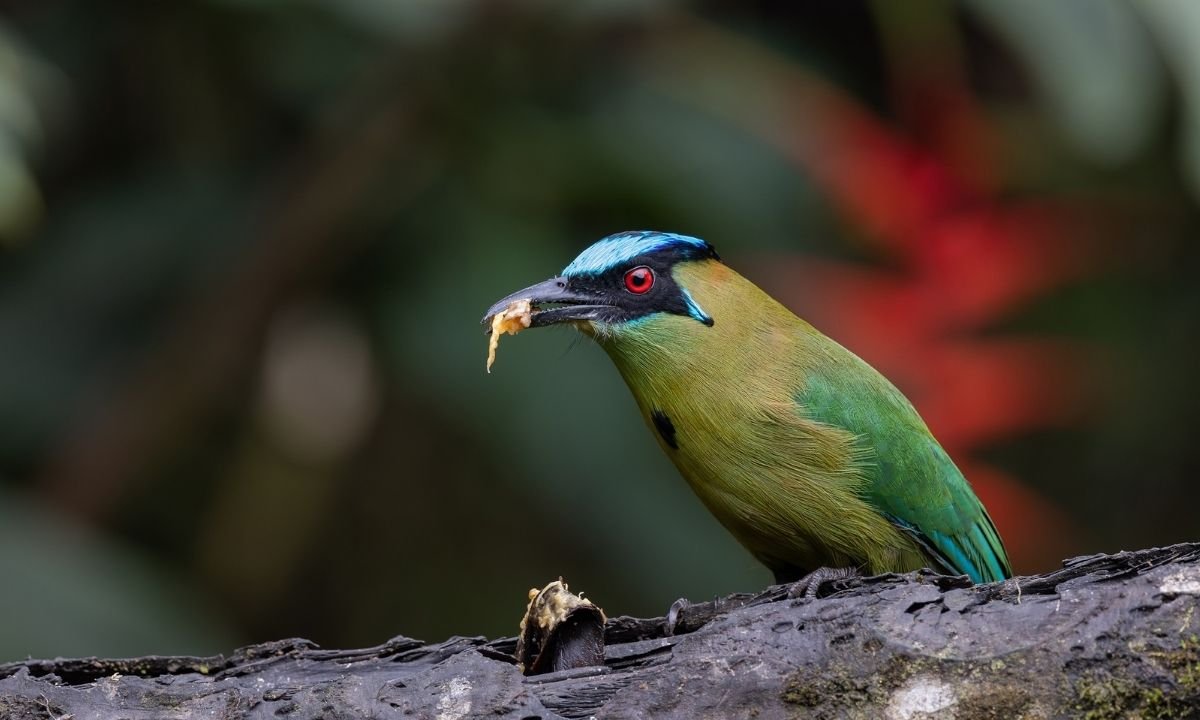
 Turquoise-browed Motmot – Quick Facts & Guide
Turquoise-browed Motmot – Quick Facts & Guide
Scientific name: Eumomota superciliosa
Status: Least Concern (IUCN)
Range: Yucatán Peninsula, Pacific slope from southern Mexico to NW Costa Rica
National bird: El Salvador, Nicaragua
 Identification
Identification
Olive-green underparts, cinnamon/rufous belly
Black mask with bright turquoise eyebrow
Long tail with bare shafts and black-tipped turquoise “rackets”
Turquoise wing flashes
 Habitat
Habitat
Open woodlands, forest edges, gardens
Often seen near human settlements
Likes sunny perches with good hunting view
 Diet
Diet
Insects (beetles, butterflies, grasshoppers)
Small reptiles (lizards, frogs)
Fruits and berries (seasonal)
 Why “Motmot”?
Why “Motmot”?
Name comes from the “mot-mot” call of related species
Turquoise-browed Motmot has a softer but distinct call
 Symbolism
Symbolism
Represents freedom, beauty, and cultural pride
Appears in Central American folklore and on national symbols
At-a-Glance Table
| Feature | Detail |
|---|---|
| Scientific Name | Eumomota superciliosa |
| Family | Momotidae |
| Size | 34–38 cm (13–15 in) |
| Tail | Racket-shaped, turquoise tips |
| Lifespan | ~12 years (wild) |
| Conservation | Least Concern |
| Main Range | Mexico to Costa Rica |
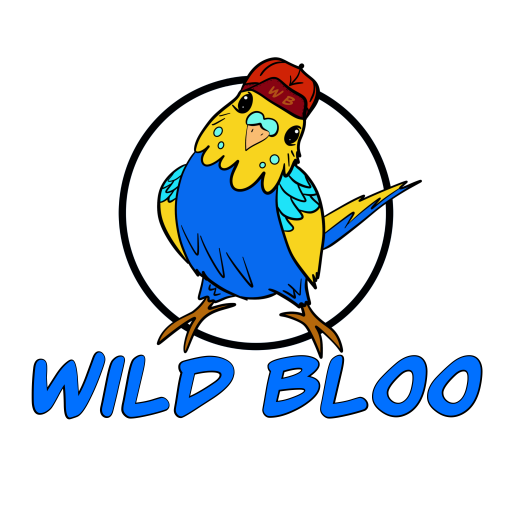
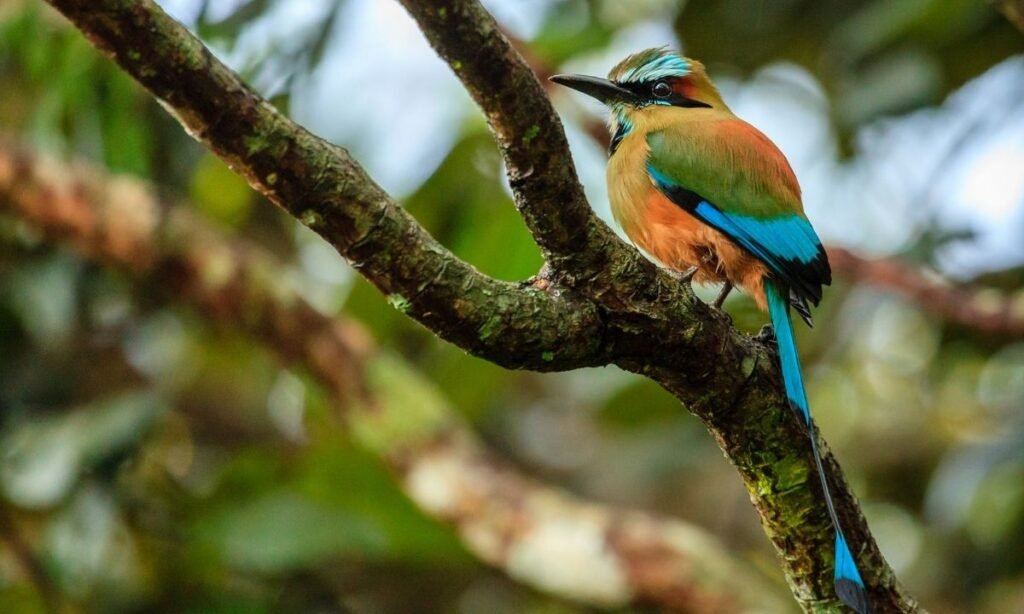
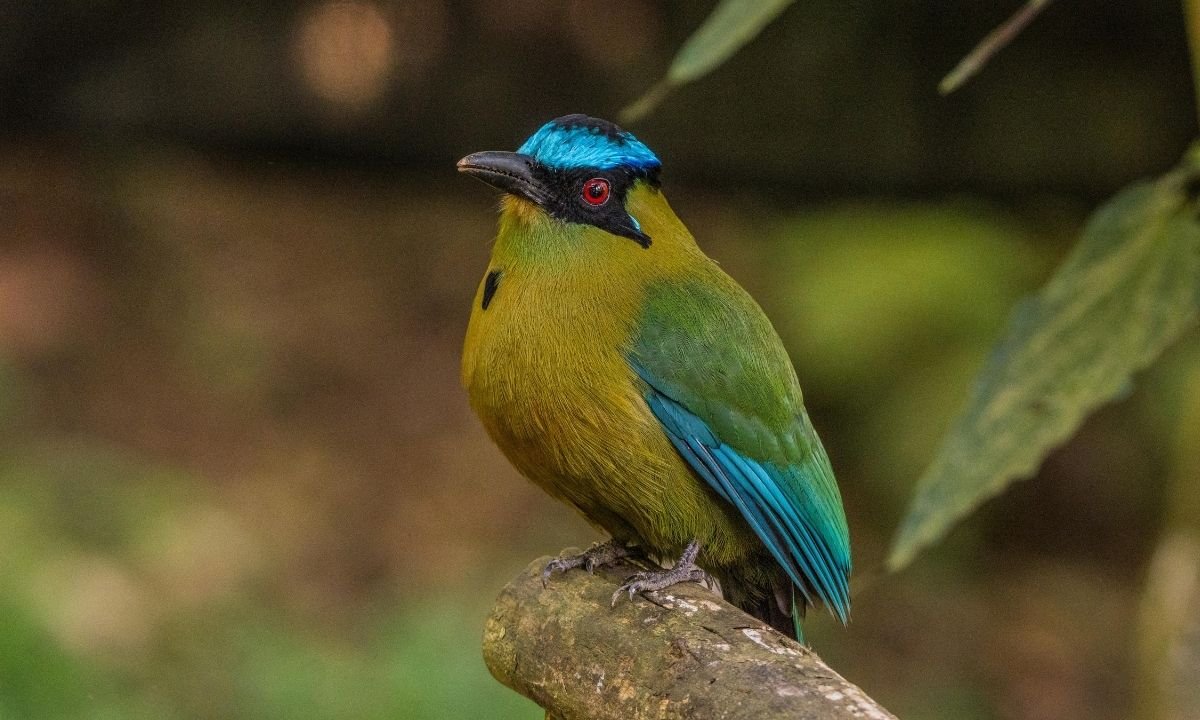
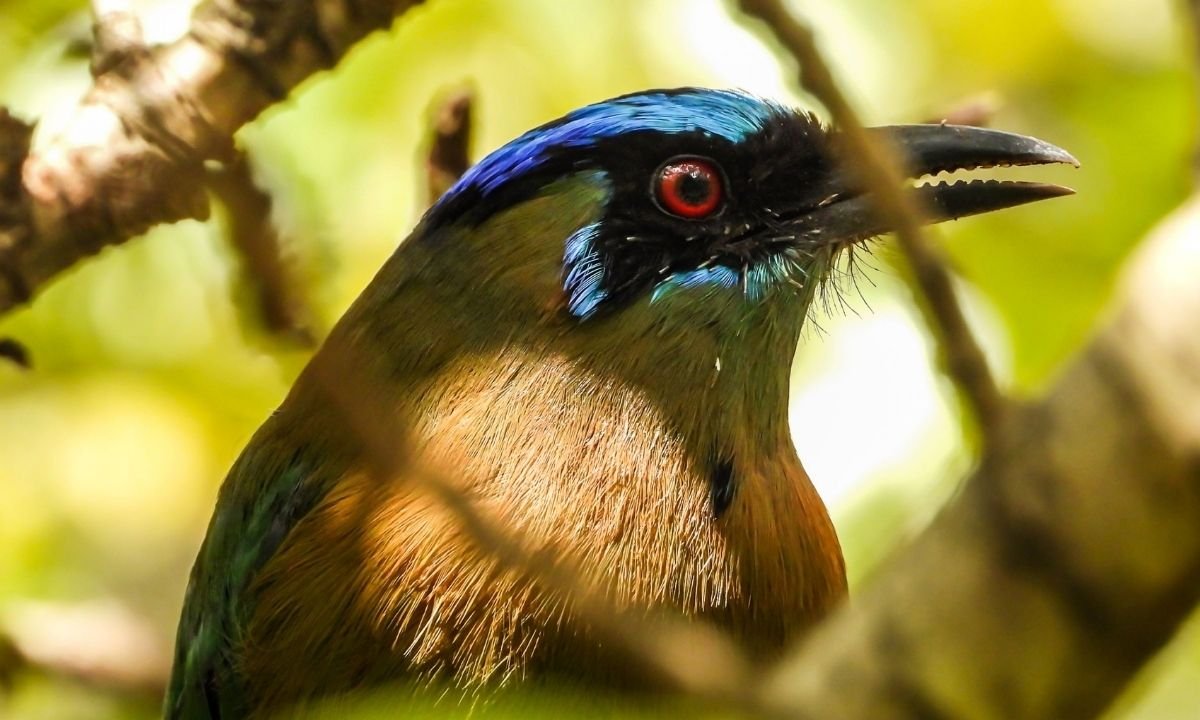
 Turquoise-browed Motmot – Quick Facts & Guide
Turquoise-browed Motmot – Quick Facts & Guide Identification
Identification Habitat
Habitat Diet
Diet Why “Motmot”?
Why “Motmot”? Symbolism
Symbolism